Here is an early summer gardening checklist, followed by suggestions on how you can make this as easy as possible.
- Weed paths and borders
- Decide where you can tolerate weeds, such as between pavers.
- Stake perennials and tall plants, such as irises
- Remember wildlife – check for nests before cutting hedges or don’t cut them yet
- Decide how often you will mow the lawn. Weekly looks smart. Less often helps wildlife and is more drought resistant.
- Put out summer pots and containers.
- Pinch out fuchsias, cosmos and other plants to make them bushier
- Take precautions against slugs and snails
- Prune shrubs which flowered early in the year. Don’t prune shrubs that haven’t flowered yet.
- Fill gaps in borders
Weed paths and borders
There is no doubt that more weeding early in the year means less weeding later on. Weeding is at the heart of your early summer gardening.
However, all gardens and all garden surfaces get weeds, including artificial turf and weed suppressant membranes.
Artificial turf does not require mowing, but it does require cleaning when leaves and blossom fall on it. And weed seeds will still land on it, sprout and need removal.
All surfaces require maintenance so before choosing one, find out exactly what maintenance it needs and whether you’re happy with the kind of care it needs.
Generally, hand weeding works best. Sprays usually drift onto neighbouring plants, even on still days. My No Nonsense Guide to Weeding Your Garden Easily has a range of tips from different experts, with the pros and cons of different approaches to weeding.
Decide where you can tolerate weeds
An increasing number of gardeners are relinquishing some sense of control in their gardens by deciding where they can enjoy weeds.
We are currently experimenting on allowing weeds, such as daisies, to grow in the cracks between pavers on the terrace. We hope that they will crowd out the plantains, brambles and weeds we don’t like. It’s a look I’m seeing around at the moment, and it looks pretty. I would love to add Mind-Your-Own-Business (Soleirolia soleirolii) because it creates mounds of bright green between pavers and cracks, but apparently it can also run riot.
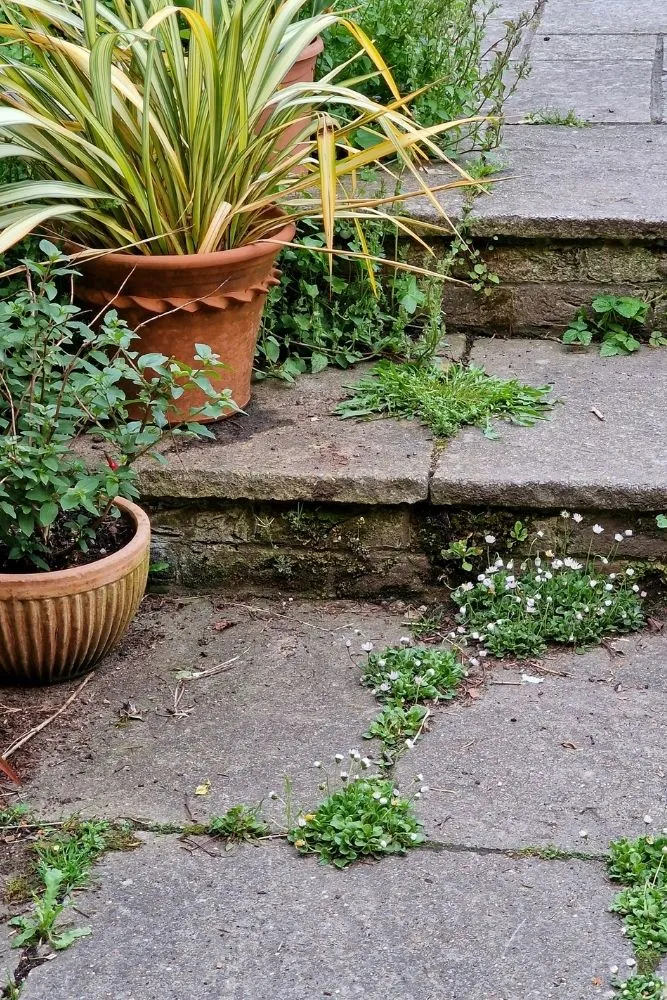
I’m also happy to let Purple toadflax (Linaria purpurea) self seed itself in my garden. It doesn’t, so far, seem to get too out of hand.
However, do check for invasive plant advice where you are, because a plant that is quite well behaved in one place can spread everywhere in another.
I’m always quite impressed by the way weeds plant themselves into pots, too. My brother has two pots of self-seeded ivy-leaved toadflax , which can cope with drought, climb walls and pop up in cracks.

And, of course, part of this is about definitions. Teasel, Welsh poppies and White Deadnettle are all plants which are either planted deliberately by those who want them or treated as weeds by those who don’t.
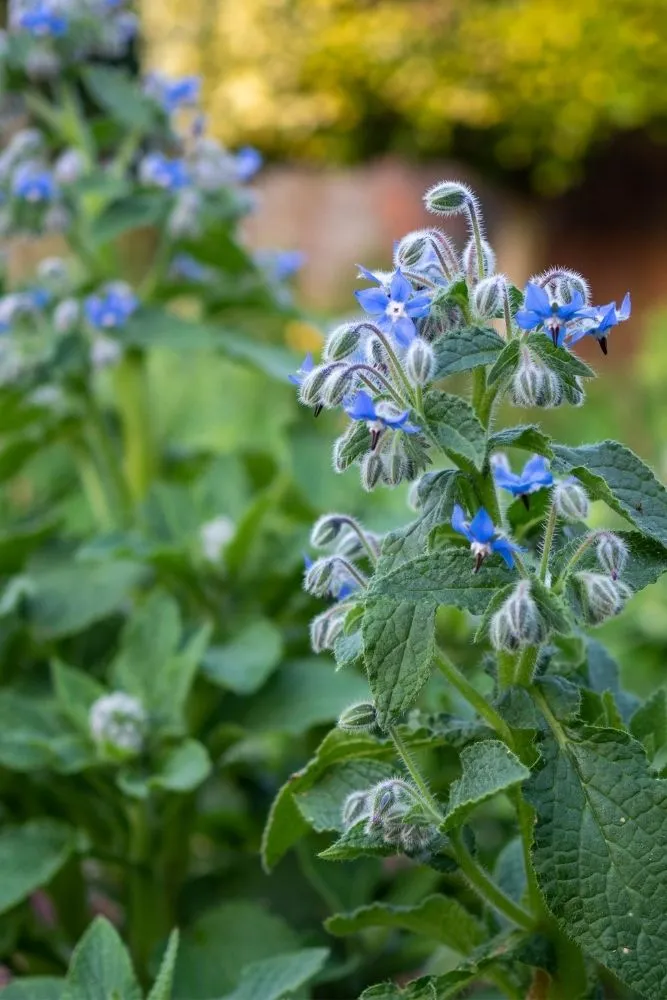
You may see posts on social media and blogs promising you ways of dealing with weeds permanently. Don’t bother reading them. No-one can deal with weeds permanently. Every garden and every outdoor surface will get weeds.
Stake perennials and tall plants before they need it
This has to be the most boring but necessary garden advice in the whole year.
If you haven’t put your stakes in, then it is one of your most critical early summer gardening jobs.
Like most gardeners, I use a mix of supports. In the past, I have bought stainless steel bow hoops, loop or ‘plant crook’ supports for single blooms like irises from Plant Belles, and single wooden ‘fence post’ stakes.
Use a soft string or tie material – don’t secure the plant with wire. I’ve used Nutscene and BioStretch Soft Stretchy Garden Twine and like them both. Both were sent to me free for review, and I’ve subsequently bought them too.
And you can also weave plant supports from birch or other twigs. It’s not difficult. I’ve done it. It looks delightfully natural, but it can be difficult to source the appropriate wood clippings. Try local Facebook groups or Facebook Marketplace.
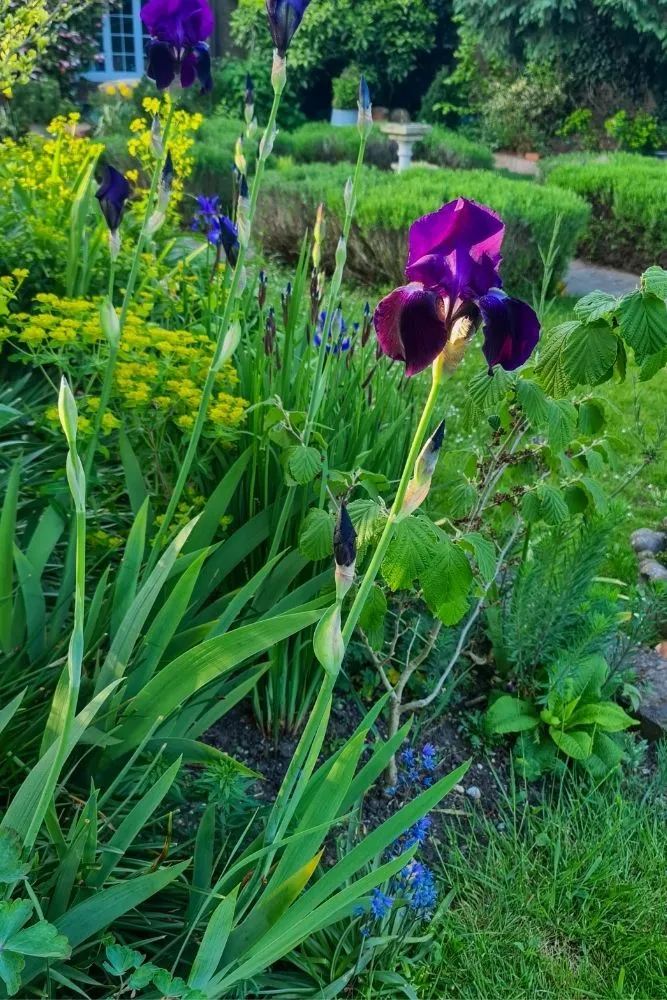
Remember wildlife – check hedges, shrubs and trees before clipping them
It’s a good time to clip hedges and they are growing fast.
But they’re also home to nesting birds. It’s actually illegal in the UK to disturb nests by clipping hedges. Before doing any hedge pruning, check carefully for nest activity.
Decide how often you will mow the lawn
Some people love a smartly mown lawn. I agree that it shows off a garden beautifully, and always appreciate it when my husband mows our lawn.
On the other hand, mowing every two weeks instead of weekly saves time, effort and money. And several professional gardeners have told me that their less frequently mown areas of lawn withstand drought better than tightly mown areas. The small flowers that emerge are helpful to pollinators.
I asked David Hedges Gower of the Lawn Association about low maintenance lawns. He suggests that if you use a robot mower, you won’t have to mow. A robot mower also leaves very finely chopped grass lying on the lawn, so you won’t have to dispose of clippings or fertilise your lawn either.
In her book, Sustainable Garden, landscape architect Marian Boswell suggests that you can create a lawn spiral, mowing in circles to leave alternate circles unmown.
Others suggest leaving patches of unmown grass further away from the house to create deliberate areas of wild ‘meadow’.
It’s worth remembering that you’re unlikely to achieve a gorgeous meadow effect immediately. It’s more likely to look like lawn grass that’s been allowed to grow long.
And meadow areas also need some care, too.
I think this is an area which can be left to personal taste. But it’s worth thinking about, rather than just doing what you’ve always done.
Put out summer pots and containers
There’s a reason why petunias, begonias and pelargoniums dominate summer pots and containers.
Containers dry out more quickly. And petunias, begonias and pelargoniums withstand drought better than most plants, because they have fleshy leaves and stems.

Sarah Raven says that she deplores the garden snobbery around these plants. She loves colour and has an exceptional eye for colours and colour combinations.
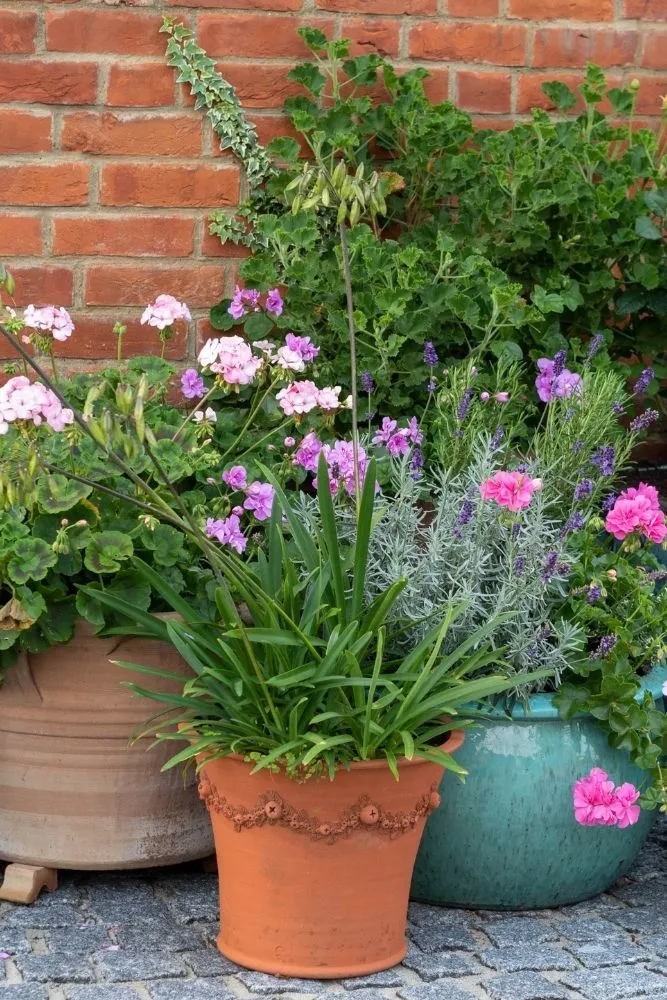
And if you’re choosing pots and containers for minimal watering – terracotta pots dry out more quickly than stoneware or porcelain, and metal containers get hotter.
Early summer gardening pinch out
Pinching out plants is another early summer gardening job I either forget or think isn’t necessary. It is absolutely vital for plants such as cosmos, chrysanthemums and dahlias.
It’s not difficult. One way is to reduce the size of the plant by half, provided that there is a good healthy set of leaves left. It will make the plant bushier, sturdier and it’ll have more flowers.
Take precautions against slugs and snails
In my interview with writer and head gardener Tom Brown of West Dean Gardens, he said that slug and snail control should start in February. That’s because two snails in early spring means 50 snails a few months later, so it’s better to deal with the two.
But even if you were assiduous in early spring, this still needs to be on the list of early summer gardening jobs. Your plants are probably not large enough to withstand a few nibbles.
It’s generally agreed that picking them off by hand at night is the most effective and environmentally friendly way of disposing of them.
I use organically approved slug pellets in the smallest quantities I can. However, there is evidence that these can harm earthworms, which are an essential part of the eco-system.
Prune shrubs which have flowered
Prune shrubs which have already flowered. Don’t prune any that haven’t flowered yet.
If that was the only piece of early summer gardening advice you ever followed, you wouldn’t go far wrong.
I find some of the ‘Gardening Jobs for June’ etc from top authorities quite confusing. One will say ‘prune wisteria.’ When I cross check on ‘how to care for wisteria’, the same authority will then say ‘prune in late summer.’
So rather than getting into a tangle with contradictory advice, prune after flowering. Except wisteria, which you will need to tackle around three times a year to stop it winding itself round your guttering.
Start deadheading flowers
Deadheading plants and flowers is one of the best ways of keeping your summer garden going. But you don’t want to deadhead every flower that goes over, because you may want it for seedheads, berries or hips in the autumn and winter.
Fill gaps in borders
It’s time to plant out dahlias and chrysanthemums. So these are good gap fillers.
When I interviewed Frances Moskovits on how to tweak your summer colour to perfection, she also keeps a few good flowering plants in pots and wedges the whole pot into the border. The sides of the pot are concealed by the other plants by now. It needs to be a plant that bulks up nicely and flowers prolifically, such as cosmos. And you need to put it in quite a large pot so that it’s roots have space to grow.
You’ll also need to remember it is in a pot, as it will need extra feeding and watering.
And Diane and Robbie Perry also put ornamental pots in their borders to fill gaps.
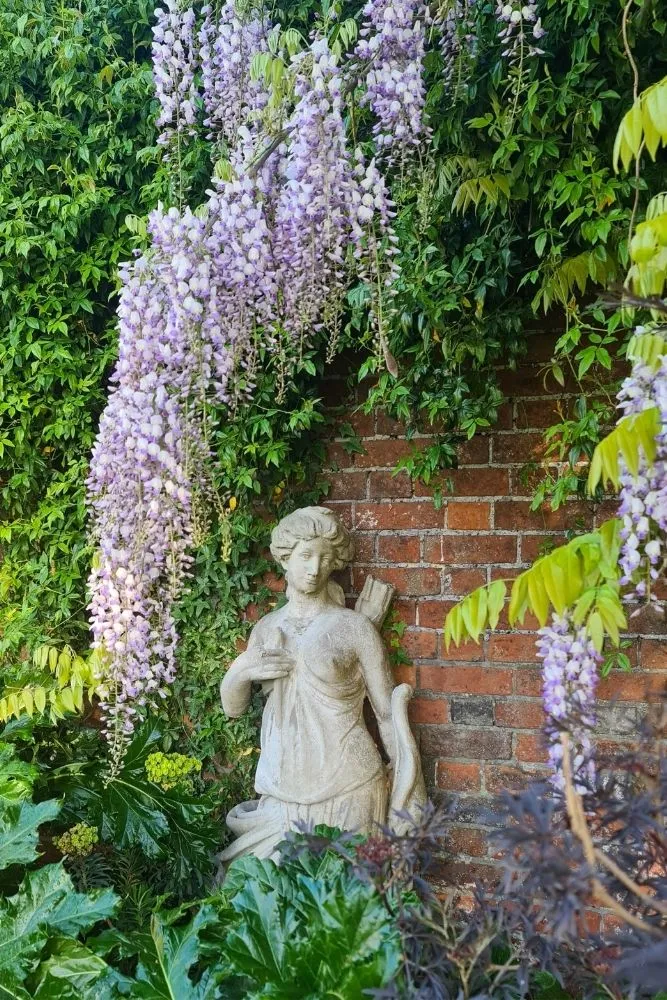
Leave a Reply